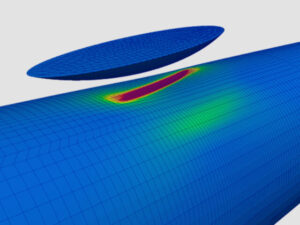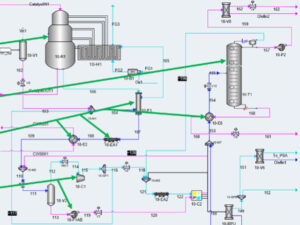Pipeline Metal Loss Evaluations per API 579 Fitness-For-Service Rules
This webinar demonstrates how API 579 can be used for fitness-for-service (FFS) of pipeline damage.
Evaluating Large Aboveground Storage Tanks Subject to Seismic Loading
This webinar covers the basics of API 650 and API 620 seismic design requirements, a simplified approach to evaluate tanks subject to seismic loading, the derivation of an equivalent static FEA-based approach for evaluating tanks subject to seismic loading, an overview of different method for performing computational explicit dynamic analyses, a brief summary of how to establish site-specific seismic ground accelerations based on geotechnical soil testing data, and a detailed overview of smooth particle hydrodynamic (SPH) analysis techniques for simulating fluid sloshing behavior in an FEA.
Inspection for FFS & FFS for Inspection
This webinar provides an overview of fitness-for-service (FFS), typical FFS inspection data requirements and damage characterization, data issues commonly encountered during FFS evaluations, a case study regarding the impact of inspection data on FFS evaluations, advice on how to deal with data uncertainty in FFS evaluations, and a case study regarding proactive FFS to optimize future inspections.
Safely Purging Vessels and Equipment
This webinar will discuss procedures and situations encountered when purging gaseous content from equipment with an inert substance. When activities inside equipment require it to be opened and/or closed, both scenarios expose the process substance to air that can lead to potentially dangerous combustible mixtures, and when toxic substances are present, it is also extremely important to safely purge out equipment to concentrations below accepted threshold values. Different methods for purging can be used depending on the vessel’s geometry, the vessel’s working pressure, and the purging media and gas relief systems available, so that operations can be performed safely. Time and cost can also play a very important role when selecting the procedure.




